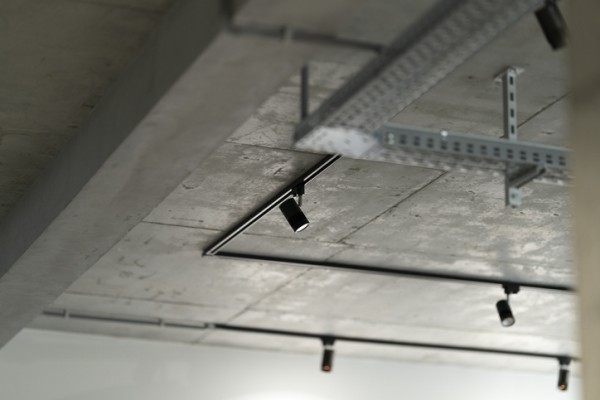
When it comes to interior lighting, the way your lights are mounted can have just as much impact as the lights themselves. While traditional fittings are often fixed in place, cable and rail lighting systems offer a much more flexible and design-forward solution. These systems allow you to position and direct light exactly where you need it, making them ideal for modern homes, renovations or rooms with unique layout challenges.
Whether you’re updating a living area, designing a kitchen or just want more control over your lighting setup, cable and rail systems are well worth considering.
What are cable and rail lighting systems?
Cable and rail lighting is a type of track lighting where multiple light fixtures are mounted along a suspended or fixed track. Rather than hard-mounting each light individually, you run a low-voltage track across the ceiling or wall, and attach adjustable fittings along it.
There are two main types:
- Cable lighting uses tensioned wires—often strung across a ceiling or between walls—to suspend the light fittings in mid-air. The effect is sleek and minimalist, with almost no visible hardware.
- Rail lighting uses a fixed bar or track (either straight or flexible) that’s mounted to the ceiling. Fixtures clip into the track and can usually be repositioned as needed.
Both systems run on low-voltage power and typically rely on a single transformer, which makes installation more efficient and simplifies your wiring layout.
Where are they best used?
Cable and rail light mounts are popular in homes where flexibility, aesthetics and precision are key. They’re especially useful in:
- Open-plan living areas, where lighting zones can be created or adjusted without rewiring.
- Kitchens, where task lighting needs to be directed to benchtops, sinks or cooktops. When paired with energy-efficient fittings, they can also reduce the running costs of your lighting.
- Hallways or stairwells, where traditional light placement may be tricky due to ceiling angles or length.
- Loft conversions or high ceilings, where mounting lights directly to a sloped ceiling isn’t practical.
- Art walls or display zones, where adjustable fittings let you highlight specific areas or pieces.
Cable systems, in particular, are ideal for modern or industrial interiors, thanks to their lightweight, almost floating look. Rail systems, on the other hand, offer a bit more structure and are easier to install in traditional ceiling setups.
Benefits of cable and rail mounts
The main advantage of these systems is flexibility. Unlike fixed downlights or pendant fittings, cable and rail systems let you move or adjust lights after installation. This is especially helpful if your needs change, like rearranging furniture, refreshing your interior design or simply deciding a spotlight would work better in another location.
They’re also a great solution in renovations, particularly when you’re working with ceilings that make standard fittings difficult to install. If your space has concrete ceilings, heritage plaster, or structural features that limit wiring options, cable systems can bypass those problems with minimal impact.
Because most cable and rail systems operate on low-voltage power, they also pair well with motion sensors or energy management systems, helping reduce electricity use in both main living zones and occasional-use areas like garages or stairwells.
Design considerations and installation
From a design perspective, cable and rail systems offer clean lines and a modern aesthetic. But good planning is still key. You’ll need to think about where the system will anchor, how much weight the ceiling can bear (especially with cable systems), and what kind of transformer is needed to power your setup.
If you’re incorporating these systems as part of a renovation or new build, it’s a good idea to discuss your lighting layout early in the construction process. That way, the necessary wiring and supports can be built in from the start, rather than retrofitted later.
While some cable and rail kits are DIY-friendly, most homeowners will benefit from working with a licensed electrician. These systems need precise tensioning, proper transformer selection and safe installation practices. An electrician can also help make sure your chosen fittings comply with AS/NZS 3000 wiring rules and local building regulations.
Are they right for your home?
Cable and rail light mounts aren’t the right fit for every room, but they offer major advantages where flexibility, style and control are important. If your space needs focused task lighting or frequent layout changes—or if you’re just after a more architectural look—they can be a smarter choice than standard ceiling fixtures.
For homeowners wanting a lighting setup that adapts to their lifestyle, this system offers a clever blend of form and function.





